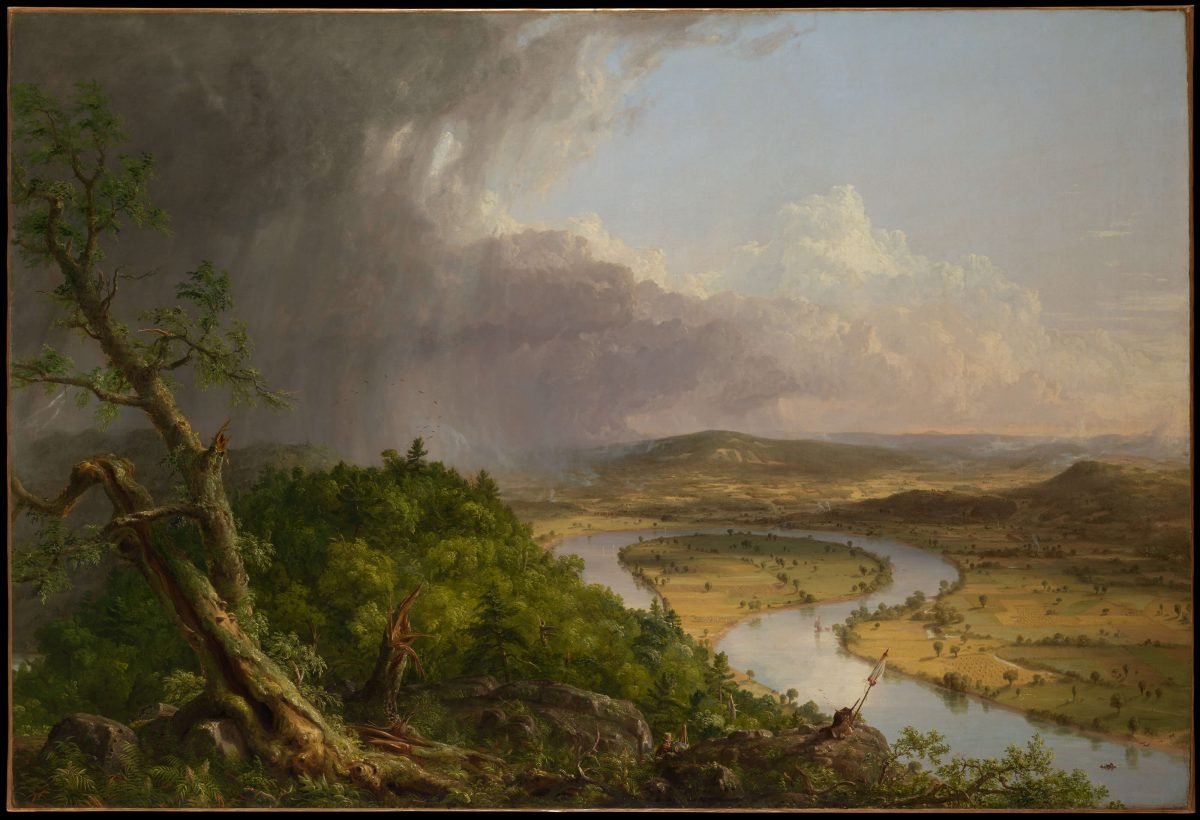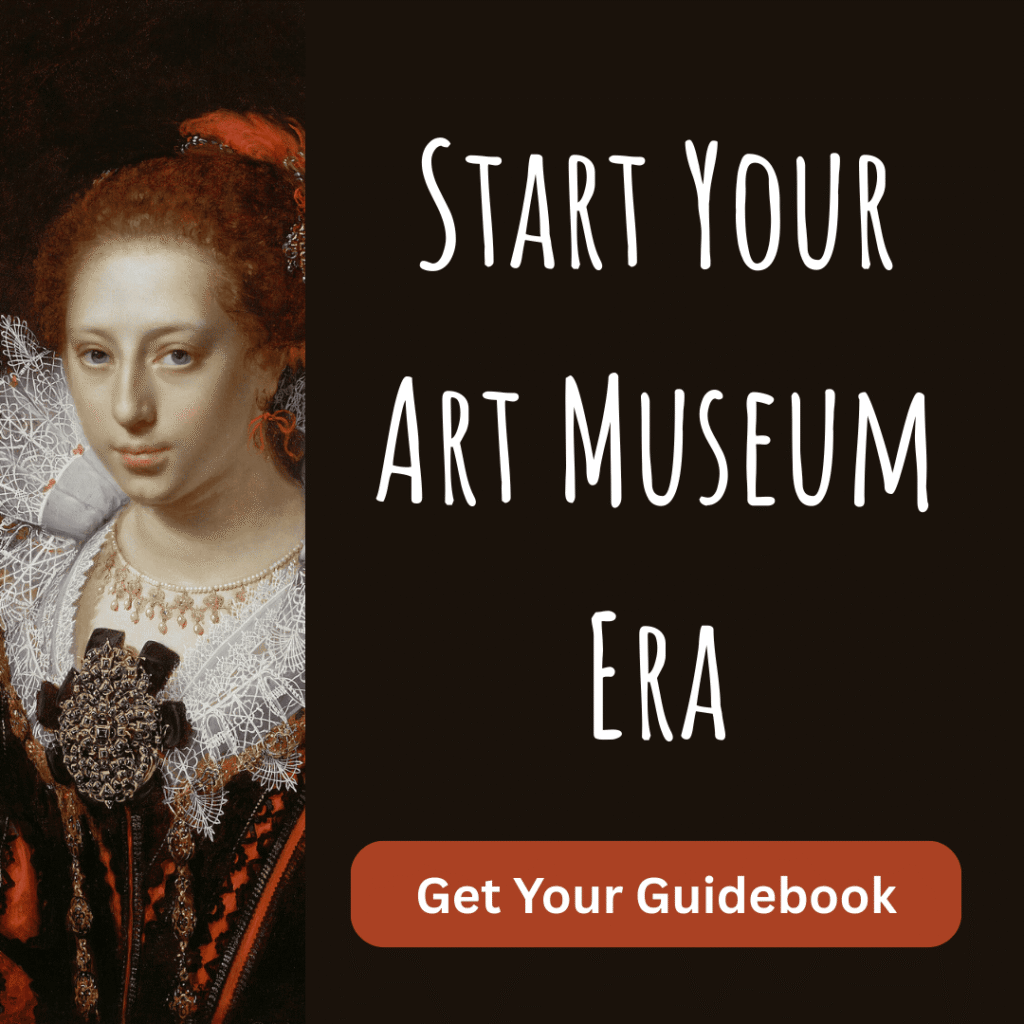Thomas Cole, View from Mount Holyoke, Northampton, Massachusetts, after a Thunderstorm—The Oxbow, 1836. The Metropolitan Museum of Art, New York.
Landscape painter Thomas Cole (1801-1848) was born in England but came to success in New York in the 1820s. One of the earliest important American painters, Cole was a founder of the so-called Hudson River School, a group of nineteenth-century artists who painted the then-wild and undeveloped American landscape. Over a period of decades, the Hudson River School, named for the area of New York that many artists painted, would include many of the most prominent names in nineteenth-century American art. The Hudson River School had a huge influence on the development of American art, and it is widely considered to be the first uniquely-American art movement.
Cole painted many beautiful images of the Northeastern United States as well as romantic European landscapes, featuring classical or Gothic ruins. He was a big fan of the sublime, a concept popular in British and European romantic landscape painting, which concerned the evocative potential of dramatic and frightening elements such as storms and treacherous terrain. Cole is considered the first to paint the American landscape in this style, though definitely not the first to paint the American landscape ever.1
Many of his works have symbolic or allegorical elements to them, most notably the Course of the Empire series. This painting, View from Mount Holyoke, Northampton, Massachusetts, after a Thunderstorm—The Oxbow, is among Cole’s best-known works. It is on view at the Metropolitan Museum of Art in New York. A stunning and dramatic depiction of a New England landscape, the painting includes numerous allegorical and even political sentiments concerning the development of both the young nation and its lands.2
Notes
- Avery, Kevin J. “The Hudson River School“. In Heilbrunn Timeline of Art History. New York: The Metropolitan Museum of Art, 2000-. (October 2004). ↩︎
- Davies, Penelope J.E. et al. Janson’s History of Art: The Western Tradition, Vol. 2 (7th ed.) Upper Saddle River, NJ: Pearson/Prentice Hall, 2007. P. 836-7. ↩︎
Recommended Reading
Ferber, Linda S. The Hudson River School: Nature and the American Vision. New York: Skira Rizzoli, 2009.



